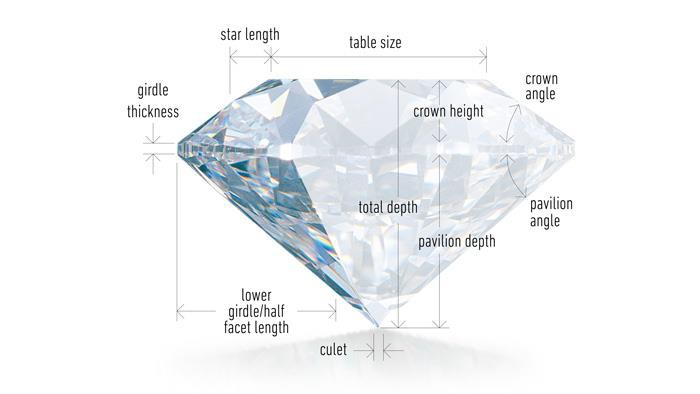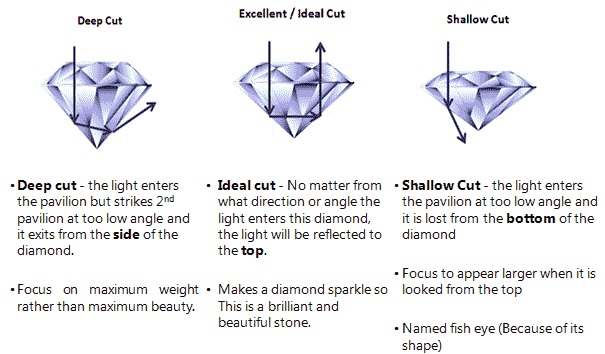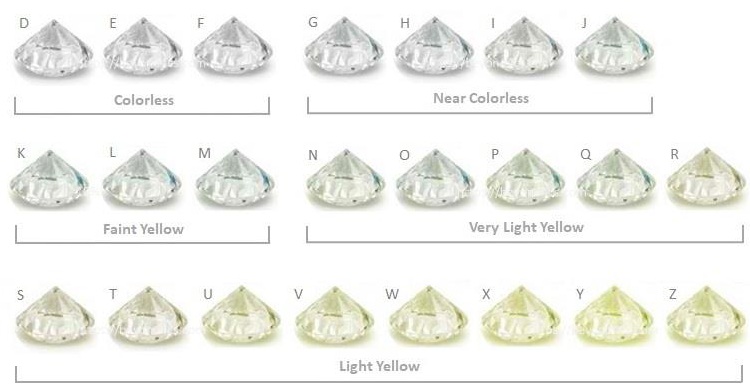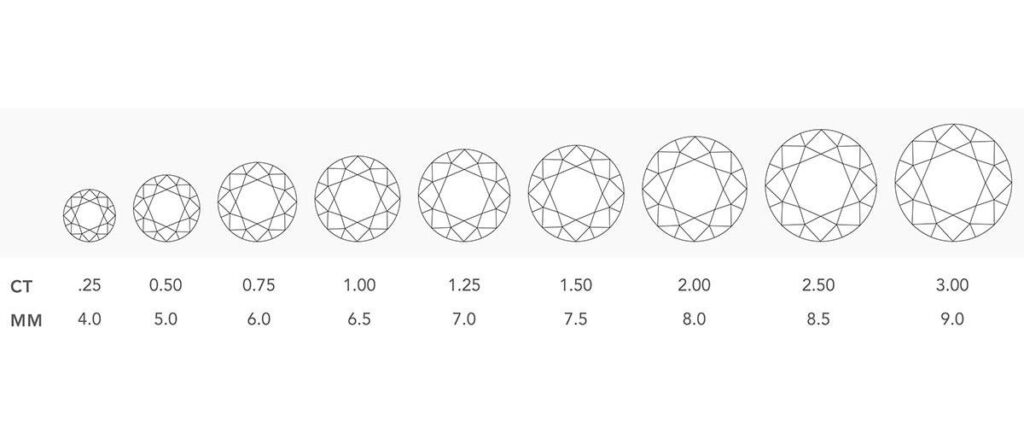DGIL 4C’S
ABOUT 4 C'S
A diamond’s 4 C’s represent the four main components of its beauty and structure: Cut, Color, Clarity and Carat. When looking at a diamond, the eye perceives a balance of its characteristics and components, including, but not limited to, the 4 C’s.
Each of the C’s are graded on a scale, and can be evaluated for quality. Though some universal terminology and standard grading exists, it does vary by lab entity.
ABOUT 4 C'S
Diamond Cut specifically refers to the quality of a diamond’s angles, proportions, symmetrical facets, brilliance, fire, scintillation and finishing details. These factors directly impact a diamond’s ability to sparkle, along with its overall aesthetic appeal.
The DGIL grades Diamond Cut on the scale of Ideal, Excellent, Very Good, Good, Fair and Poor. The Ideal and Excellent grades, depending on Diamond Shape, signify proportions and angles cut for maximum brilliance and fire.



Diamond Color is graded in terms of how white or colorless a diamond is. The DGIL grades diamonds from D to Z, with D being the most colorless, and Z containing noticeable brown or yellow tint
The more noticeable the color, the lower its value, while the less noticeable the color, the rarer it is and the higher its value. There is an exception to this rule: If your diamond has tints of a color other than yellow or brown – for example, if it is blue, purple or red – it is considered to be fancy colored, and is graded differently. Assuming your diamond is in the yellow/brown color range, trained gemologists will grade it based on a finely calibrated scale that is compares it to a master set.

A Diamond’s Clarity grade evaluates how clean a diamond is from both inclusions and blemishes. Clarity is graded by the DGIL on the following scale:
- FL (Flawless)
- IF (Internally Flawless)
- VVS1 (Very, Very Slightly Included 1)
- VVS2 (Very, Very Slightly Included 2)
- VS1 (Very Slightly Included 1)
- VS2 (Very Slightly Included 2)
- SI1 (Slightly Included 1)
- SI2 (Slightly Included 2)
- I1 (Inclusions 1)
- I2 (Inclusions 2)
- I3 ( Inclusion 3 )
Depending on the size, location and darkness of blemishes and inclusions, these imperfections can interfere with light as it passes through the diamond. When this happens, the brilliance and beauty of the diamond is dulled, taking away from the high quality Cut.
For Clarity, our primary recommendation is to ensure the diamond is eye clean, and that inclusions are not interfering with light reflection.
CARAT WEIGHT
A diamond’s size is indicated by its weight, and the weight is indicated in carats: one carat equals 1/5 of a gram. The word carat is often abbreviated as “ct.” If a diamond weighs less than one carat, its weight is indicated in points (1/100 of a carat). Therefore, a half-carat stone weighs 50 points, while a 75 point diamond is 3/4 of a carat. If a diamond weighs more than one carat, its weight is expressed in carats and decimals. Therefore, a 1.07 ct. stone weighs one carat and 7 points.

